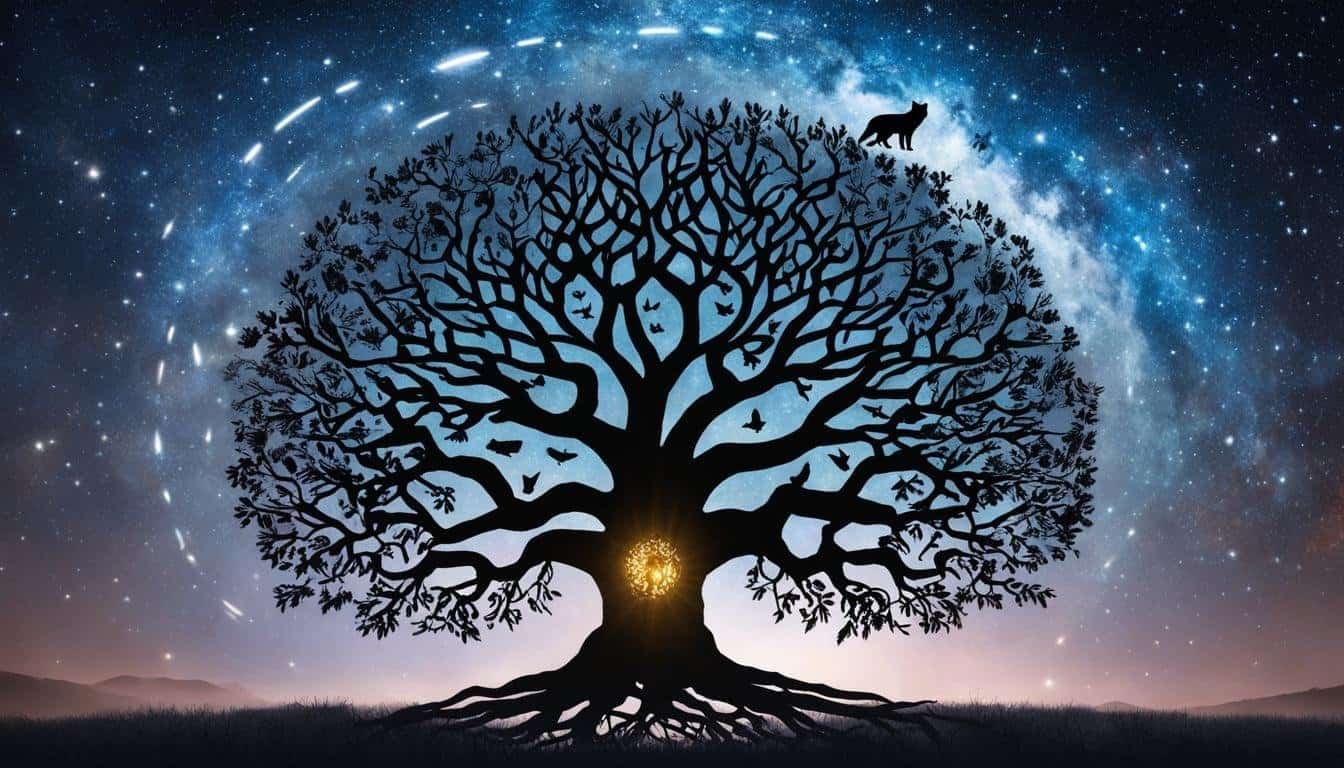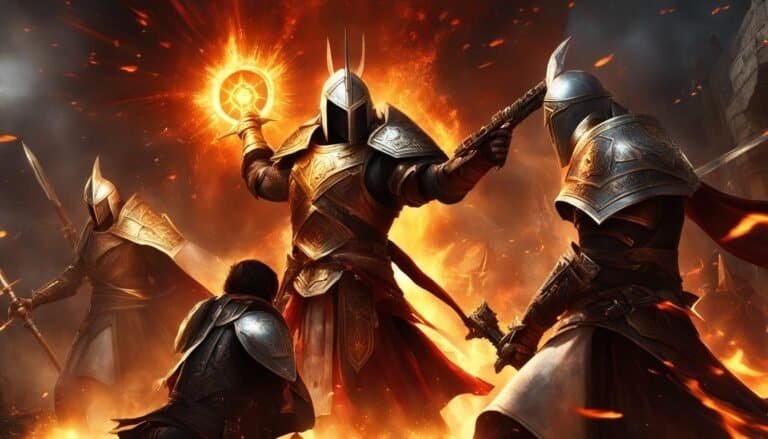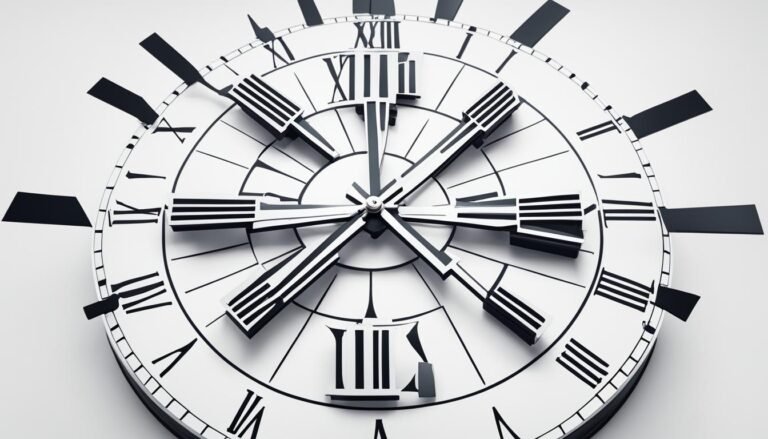Exploring Carl Jung’s Archetypes in Depth
Carl Jung’s archetypes have long fascinated psychologists and individuals interested in understanding the human psyche. These archetypes are universal symbols or patterns that reside in the collective unconscious of all humans, shaping our thoughts, feelings, and behaviors in profound ways. By exploring and delving deeper into these archetypes, we can gain valuable insights into ourselves and the world around us.
Jungian archetypes encompass a wide range of archetypal symbols, each with its own distinct characteristics and significance. From the shadow archetype that represents our hidden desires and repressed emotions to the anima and animus archetypes that explore the masculine and feminine aspects of our identity, these archetypes provide a framework for understanding the complexities of the human experience.
The persona archetype, often seen as the mask we wear in social situations, and the hero archetype, representing the journey of self-actualization and transformation, add further depth to Jung’s archetypal theory. Each archetype plays a unique role in shaping our behavior, relationships, and overall sense of self.
By delving into the world of Carl Jung’s archetypes, we can gain a greater understanding of the collective unconscious and the psychological patterns that influence our lives. Whether you seek personal growth, self-awareness, or a deeper understanding of the human experience, the exploration of these archetypes can be truly illuminating.
Key Takeaways:
- Carl Jung’s archetypes are universal symbols or patterns present in the collective unconscious.
- Understanding and exploring these archetypes can provide valuable insights into the human psyche.
- Jungian archetypes encompass a range of symbols, including the shadow, anima/animus, persona, and hero archetypes.
- These archetypes influence our behavior, relationships, and overall sense of self.
- Exploring Carl Jung’s archetypes can lead to personal growth, self-awareness, and a deeper understanding of oneself.
Carl Jung: The Man Behind the Archetypes
Carl Jung, a Swiss psychiatrist who revolutionized the field of psychoanalysis, played a pivotal role in our understanding of the human mind and personality. Dissenting from Freud’s theories, Jung delved into the depths of the collective unconscious and the power of archetypes, uncovering hidden aspects of the human psyche.
Jung’s exploration of archetypes shed light on the persona, shadow, anima/animus, self, and hero, revealing their influence on shaping human behavior and personality. By studying these archetypes, we gain insight into the complexities of the human experience and the underlying patterns that drive our thoughts, emotions, and actions.
“The challenge for psychology is to recognize the significance of archetypes and the collective unconscious in individual lives.” – Carl Jung
Jung’s groundbreaking work paved the way for a deeper understanding of ourselves and our place in the world. By acknowledging and embracing the archetypal forces within us, we embark on a journey of self-discovery, personal growth, and self-actualization.
Embracing the Archetypes
To truly comprehend the impact of archetypes, it is essential to explore how each of them shapes our lives:
- The persona archetype, often likened to a mask, reflects the social roles and behaviors we adopt to fit into society.
- The shadow archetype encompasses our hidden or repressed aspects, providing a glimpse into the unconscious forces that influence our behavior.
- The anima/animus archetypes represent the balance between the feminine and masculine energies within us, influencing our relationships and aiding in the development of our gender identities.
- The self archetype acts as the center of the psyche, integrating all other archetypes and promoting self-awareness and self-realization.
- The hero archetype symbolizes the journey and transformation we undergo in life, urging us to embrace challenges and strive for personal growth and actualization.
These archetypes, deeply embedded in our collective unconscious, guide our perceptions, motivations, and actions, shaping our personalities and influencing the paths we choose.
Carl Jung’s Theory of the Collective Unconscious
In Carl Jung’s theory, the collective unconscious plays a pivotal role in shaping human behavior and understanding the depths of the human psyche. The collective unconscious refers to the shared, inherited knowledge and experiences that are present in every individual’s unconscious mind.
Within the collective unconscious, there are universal patterns or themes known as archetypes. These archetypes are innate and manifest in various forms, such as symbols, images, and motifs, that are observed across cultures, myths, dreams, and literature.
“The collective unconscious contains the whole spiritual heritage of mankind’s evolution, born anew in the brain structure of every individual.” – Carl Jung
These archetypes serve as fundamental building blocks that influence our thoughts, feelings, and behavior, providing insights into the universal human experience. They tap into our deepest instincts, desires, fears, and motivations, shaping our perceptions of the world.
By exploring the collective unconscious and identifying these archetypes, we gain a deeper understanding of ourselves and humanity as a whole. We uncover the hidden layers of symbolism and meaning that permeate our lives, shedding light on the complexities of the human condition.
The image above visually represents the concept of the collective unconscious, depicting the interconnectedness of the human mind and the presence of inherited knowledge and archetypes within it.
The Importance of Archetypes in Literature
One domain where archetypes are prominent is literature. Authors often utilize archetypal characters, symbols, and themes to create stories that resonate with readers on a deep, unconscious level. These universal patterns found in literature allow readers to connect with the characters, themes, and symbols, tapping into their own collective unconscious and shared human experiences.
| Archetype | Description | Example |
|---|---|---|
| The Hero | Embodies bravery, resilience, and the journey towards self-discovery and transformation. | Harry Potter in the Harry Potter series by J.K. Rowling |
| The Mentor | Guides and supports the hero in their quest, providing wisdom and knowledge. | Gandalf in The Lord of the Rings by J.R.R. Tolkien |
| The Trickster | Brings chaos, challenges conventions, and disrupts societal norms. | The Cat in Alice’s Adventures in Wonderland by Lewis Carroll |
This table provides examples of archetypal characters found in literature, showcasing how these universal patterns enrich and enliven stories, making them relatable and impactful for readers.
In conclusion, Carl Jung’s theory of the collective unconscious highlights the presence of inherited archetypes and universal patterns within the human psyche. These archetypes, observed in myths, dreams, literature, and cultural symbols, shed light on the core aspects of the human experience and shape our behavior and understanding of the world. By recognizing and exploring these archetypes, we embark on a journey towards self-discovery, personal growth, and a deeper comprehension of the human condition.
Jungian Archetypes: Uncovering the Core Patterns
Jung, a renowned Swiss psychiatrist, identified various archetypes that shed light on different aspects of the human psyche. These archetypes serve as core patterns that shape our thoughts, feelings, and behaviors. By understanding and exploring these archetypes, you can gain profound insights into your own personality and the world around you.
One of the key archetypes is the self, which represents the integration of all other archetypes. It symbolizes the wholeness and harmony within an individual’s psyche. The self archetype prompts self-reflection and the quest for self-actualization.
The persona archetype refers to the mask we wear in social situations. It is the image we present to the world, shaped by societal expectations and norms. The persona allows us to interact and adapt to various social roles and situations.
The shadow archetype, on the other hand, represents the repressed or hidden aspects of ourselves. It embodies the parts of our personality that we find unacceptable or uncomfortable. Exploring the shadow can be challenging but can lead to self-discovery and personal growth.
The anima/animus archetypes symbolize the masculine and feminine aspects within each individual, regardless of gender. The anima represents the feminine aspects in men, while the animus represents the masculine aspects in women. These archetypes influence our perceptions of the opposite gender and contribute to our inner balance.
Lastly, the hero archetype signifies the journey and transformation that individuals experience in their lives. It represents the inner courage to face challenges, overcome obstacles, and strive for self-actualization. The hero archetype empowers individuals to embrace their unique path and make a positive impact on the world.
Understanding these core patterns of the human psyche unlocks a deeper awareness of oneself and others. It enables personal growth, self-reflection, and the cultivation of authentic relationships. Embrace the power of these archetypes to embark on a transformative journey of self-discovery.
| Archetype | Description |
|---|---|
| Self | The integration of all archetypes; symbolizes wholeness and harmony within the psyche. |
| Persona | The mask we wear in social situations; shaped by societal expectations and norms. |
| Shadow | The repressed or hidden aspects of ourselves; represents the parts we find unacceptable or uncomfortable. |
| Anima/Animus | The masculine and feminine aspects within each individual; influence perceptions of the opposite gender and contribute to inner balance. |
| Hero | Symbolizes the journey and transformation in life; empowers individuals to face challenges and make a positive impact. |
The Power of Archetypes in Understanding Personality
Archetypes are powerful tools that can provide deep insights into an individual’s personality. By examining archetypes, we can gain a better understanding of our own traits, tendencies, and behavior patterns.
The Myers-Briggs Type Indicator (MBTI) and Enneagram are two popular systems that utilize archetypes to identify different personality types and characteristics. These systems help individuals gain self-awareness and develop a deeper understanding of themselves and others.
With the Myers-Briggs Type Indicator, individuals are assigned a personality type based on preferences in four key dimensions: extraversion/introversion (E/I), sensing/intuition (S/N), thinking/feeling (T/F), and judging/perceiving (J/P). Through these archetypal categories, the MBTI provides an in-depth look into an individual’s cognitive processes and how they interact with the world.
Similarly, the Enneagram is a system that identifies nine different personality types, each represented by a unique archetype. These archetypes delve into the core motivations, fears, and desires that shape an individual’s personality. By understanding how these archetypes manifest in our own lives, we can uncover patterns of behavior and explore opportunities for personal growth.
| Archetype | Myers-Briggs Type Indicator | Enneagram |
|---|---|---|
| The Thinker | INTP | Type Five – The Investigator |
| The Protector | ISFJ | Type Six – The Loyalist |
| The Leader | ENTJ | Type Eight – The Challenger |
These archetypal systems not only provide insight into individual personality traits but also offer strategies for personal development. They enable individuals to embrace their strengths, work on their weaknesses, and cultivate a deeper sense of self-awareness and understanding.
By exploring the power of archetypes, we can gain a deeper understanding of our own personalities and uncover the potential for personal growth and fulfillment.
The Importance of Persona and Shadow Archetypes
Within Carl Jung’s archetypal framework, the persona and shadow archetypes hold significant relevance in understanding the complexities of the human psyche and behavior. The persona represents the mask we present to the world, influencing how we want others to perceive us. It embodies the social roles we adopt and the image we project to fit societal expectations.
To further explore the persona archetype, imagine a person who portrays a confident and outgoing persona in social situations, but deep down, they may feel insecure or introverted. This dissonance between their inner thoughts and outer projection demonstrates how the persona archetype operates.
The shadow archetype, on the other hand, encompasses the unconscious aspects of our personality that we choose to repress or deny. It encompasses the darker, undesirable qualities that we may find difficult to accept or acknowledge. These hidden aspects can manifest in unexpected ways, often leading to behaviors or emotions that seem incongruent with our conscious self.
By bringing the persona and shadow archetypes into our awareness, we can begin to explore the unconscious elements that drive our behavior and shape our personalities. Recognizing and integrating these aspects can lead to a deeper understanding of ourselves and enhance personal growth and self-awareness.
Reconciliation and Integration
In order to reconcile the persona and shadow archetypes, it is crucial to acknowledge and address their existence. This process involves acknowledging and accepting the shadow’s presence, rather than repressing or avoiding it.
“One does not become enlightened by imagining figures of light, but by making the darkness conscious.” – Carl Jung
By shining a light on our shadow, we can begin to understand its origins, motivations, and impact on our behavior. This self-inquiry allows us to develop a more holistic understanding of ourselves and the intricate interplay between these archetypes.
The Journey to Self-Discovery
Exploring the persona and shadow archetypes can be a transformative journey of self-discovery. Through self-reflection, introspection, and perhaps with the guidance of therapy or psychological tools, we can navigate the depths of our unconscious and bring hidden aspects into conscious awareness.
Embracing our persona with authenticity, while integrating and accepting our shadow, can lead to a more balanced and integrated sense of self. This process enables us to tap into the depths of our potential, fostering personal growth, and cultivating a deeper connection to our true essence.
| Persona Archetype | Shadow Archetype |
|---|---|
| The persona is the social mask that individuals wear, influencing how they present themselves to the world. | The shadow includes the hidden or repressed parts of an individual’s personality that they may find unacceptable or uncomfortable to acknowledge. |
| Individuals may adopt different personas in various social contexts to fit societal expectations or desired roles. | The shadow can manifest as unexpected behaviors or emotions that are incongruent with an individual’s conscious self-image. |
| Awareness and exploration of the persona archetype can lead to authenticity and a better understanding of one’s social interactions. | Integration and acceptance of the shadow archetype foster self-understanding, personal growth, and psychological wholeness. |
The Significance of Anima and Animus Archetypes
The anima archetype represents the feminine aspects in men, while the animus represents the masculine aspects in women. These archetypes play a significant role in shaping personality and relationships, as well as influencing the development of gender identity.
The anima archetype, present in the unconscious of men, embodies the characteristics and qualities traditionally associated with femininity. This includes emotions, intuition, sensitivity, and creativity. It represents the psychological and emotional connection to the feminine, supporting the development of a balanced and integrated personality.
The animus archetype, on the other hand, resides in the unconscious of women and represents the masculine aspects within them. It manifests as assertiveness, logic, rationality, and independence. The animus archetype facilitates the integration of masculine qualities, helping women develop a sense of empowerment and autonomy.
These archetypes not only influence individual behaviors and traits but also play a significant role in shaping relationships. The anima and animus archetypes can affect attraction, communication, and dynamics between individuals. By understanding and embracing these archetypes, individuals can cultivate healthier and more fulfilling relationships.
Moreover, the presence of the anima and animus archetypes in the psyche allows for a deeper exploration of gender identity. They provide insight into the diverse aspects that exist within each individual, regardless of their biological sex. By recognizing and embracing both the masculine and feminine aspects, individuals can achieve a greater sense of wholeness and authenticity.
“The anima and animus represent the essential connection to the opposite gender within ourselves. Recognizing and integrating these archetypes can lead to a more balanced and harmonious expression of gender identity.” – Carl Jung
| Key Points |
|---|
| 1. The anima archetype represents femininity in men. |
| 2. The animus archetype represents masculinity in women. |
| 3. These archetypes influence personality and relationships. |
| 4. They play a role in the development of gender identity. |
Exploring the Journey of the Hero Archetype
The hero archetype represents the journey and transformation that individuals experience throughout their lives. It symbolizes the struggle to achieve self-actualization and make a positive impact on the world.
Every hero’s journey is unique and follows a distinctive pattern of challenges, growth, and self-discovery. This journey often begins with a call to adventure, where the hero is faced with a challenge or a problem that must be overcome.
As the hero embarks on their quest, they encounter various obstacles and trials that test their strength, courage, and resilience. These challenges may involve facing their fears, battling inner demons, or confronting external adversaries.
Throughout the journey, the hero undergoes a profound transformation. They evolve both internally and externally, gaining new knowledge, skills, and wisdom along the way. The hero’s transformation represents their personal growth and development, as they discover their true potential and unlock hidden abilities.
Ultimately, the hero’s journey culminates in self-actualization, where they fully embody their heroic qualities and realize their purpose in life. This self-realization enables the hero to make a significant impact on the world, whether it be through acts of courage, leadership, or inspiring others to embark on their own journeys of self-discovery.
The hero archetype is a powerful symbol that resonates with individuals across cultures and time. It reflects the universal human desire for personal growth, transformation, and the pursuit of a higher purpose.
“The hero’s journey is not about avoiding pain and difficult experiences; it is about embracing them and using them as catalysts for growth and self-actualization.”
Understanding the hero archetype can provide individuals with inspiration, guidance, and motivation on their own journeys of self-discovery. By identifying with the hero archetype, individuals can find the strength and resilience to overcome obstacles, pursue their dreams, and make a positive impact on their lives and the lives of others.
Conclusion
Understanding the human psyche is a complex and fascinating journey, and Carl Jung’s archetypes provide a powerful tool for exploring this realm. By delving into the depths of the collective unconscious, we can uncover the universal symbols and patterns that shape our thoughts, feelings, and behaviors. Through the exploration of archetypes such as the persona, shadow, anima/animus, self, and hero, we gain a deeper understanding of ourselves and the world around us.
By embracing these archetypes and integrating their lessons into our lives, we can embark on a path of personal growth and self-awareness. The persona archetype teaches us to examine the masks we wear in social situations, while the shadow archetype invites us to confront our repressed aspects. The anima/animus archetypes illuminate the delicate dance between masculinity and femininity within us, and the hero archetype inspires us to embark on a transformative journey towards self-actualization.
Carl Jung’s archetypes serve as transformative guides on the quest for self-discovery. They illuminate the depths of our psyche and offer profound insights into our behavior and personality. Ultimately, they invite us to explore the depths of our own being, leading to personal growth, self-awareness, and a greater understanding of ourselves. Embrace the power of Carl Jung’s archetypes, and embark on a journey of self-discovery that will forever enrich your life.







